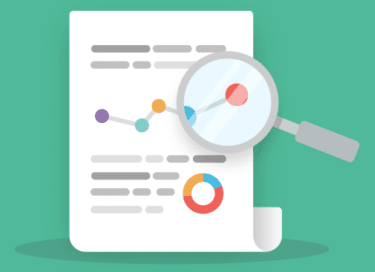Are Your Email Marketing Metrics Being Impacted by Gmail Prefetching Images?
The email marketing community has kept close watch on how Apple’s Mail Privacy Protection (MPP) may disrupt the significance of traditional email marketing metrics since last fall. Now it seems we need to add Gmail–which is prefetching images under certain circumstances–to the list, too.
Here’s a closer look at when Gmail is prefetching images and ways you may want to reconsider some of your email marketing metrics to respond.
In what circumstances is Gmail prefetching?
First things first: Gmail’s prefetch is in addition to (and different from) Google Image Cache opens, which has been reality since 2013 and occurs when the user opens the email.
Much like MPP, the degree of impact Gmail prefetching may have on your email marketing metrics depends on how much of your audience is using Gmail–and whether they are doing so under a very specific set of circumstances.
If you look at Gmail use from a pure numbers standpoint, prefetching appears to have the power to muddy quite a few open rates. For example, our December 2021 email client market share report shows that Gmail is the most popular webmail client with 89.6% share–but it’s important to note that not all Gmail users or messages are impacted by prefetching.
As our friends at Sparkpost explain, “the image prefetch only occurs when the user is:
- Logged into the Gmail application
- Comes from a Google IP address
- Is requested using the following user-agent string: Mozilla/5.0 (Windows NT 10.0; Win64; x64) AppleWebKit/537.36 (KHTML, like Gecko) Chrome/42.0.2311.135 Safari/537.36 Edge/12.246 Mozilla/5.0.”
Ultimately, Sparkpost’s analysis estimates that the Gmail prefetch could mean open rates are inflated by up to two percentage points. But whether they are (and how much) depends on your unique subscribers. Compared to Apple’s MPP, which has been influential enough to make email marketers debate the meaning of an open rate, its significance pales in comparison. (Plus, if you use Litmus Email Analytics, there’s no need to worry. We ignore those Gmail prefetches–since they’re not really opens).
What can email marketers do about Gmail prefetching?
Don’t rely on open rates as your “go to” email marketing metric
Open rates are one of the most common email marketing metrics to rely on to gauge performance–but they may not tell you a true or complete story about your campaigns. Aside from the false open rates that could occur due to Apple’s MPP and Gmail prefetching, did you know that open rates include people who simply glance at an email message for less than two seconds, and those that skim it for up to seven seconds? By contrast, using “read rate” as an email marketing metric tells you who actually read your message– defined by whether they looked at a message for eight seconds or more.
Know your audience to gauge impact
The degree to which your email marketing metrics are impacted by Apple’s MPP or Gmail prefetching ultimately comes down to how many of your subscribers use either (and in the case of Gmail, meet the criterion). To know that, you have to know your audience. If you are a Litmus user, Litmus Email Analytics will show you the ins and out of your specific email client market share at any given time.
Don’t rely on opens to trigger email campaigns and automations
If you’re using open-based automations in your campaign to trigger messaging, Litmus’ Senior Manager of Email Marketing, Jaina Mistry, cautions that you could unintentionally fall into the trap of over-messaging your audience. “Instead of using opens to trigger follow-up calls or nurture messages based on opens, consider other behaviors you could trigger automations on, like clicks or website behaviors,” says Mistry.
To trigger an action in your email message, consider adding something compelling to your email that encourages your subscriber to click on it– whether that’s a relevant piece of content, a poll, or even a “thumbs up” voting option. Ultimately, the goal is to validate that your readers have actually opened and engaged with your email so you can start to nurture a deeper relationship.
One final note–remember that when you follow up to a response can be as critical to engagement as how. While many of us have come to expect automated responses when we interact with a company, we don’t necessarily want to feel that at play. Instead of firing off a follow-up email after the click, consider timing the message in a way that makes the subscriber feel valued, without feeling overwhelmed.
To learn more about your unique email audience and how to get reliable insights that move the needle on your email marketing, check out Litmus Email Analytics.

| Go beyond opens and clicks with Litmus Email Analytics Dig deeper than the data your email platform gives you, and better understand your audience and the performance of your email campaigns. |

Stephanie Christensen
Stephanie Christensen was the Director, Content Marketing at Litmus
